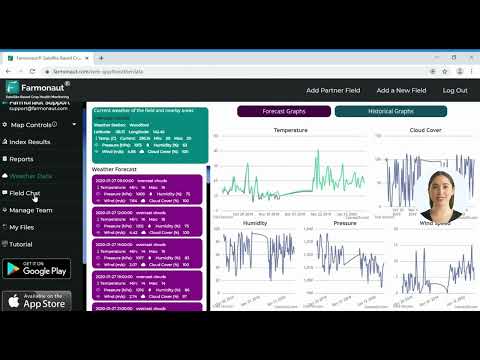Unlocking Arizona’s Market Potential: Expert Stock Analysis and Investment Strategies Revealed
“Over 90% of institutional investors rely on equity research reports for making investment decisions.”
Welcome to our comprehensive exploration of Arizona’s vibrant stock market landscape and the cutting-edge investment strategies shaping its future. In this in-depth analysis, we’ll delve into the intricate world of equity research reports, financial analyst ratings, and the latest trends influencing institutional investor behavior. Our goal is to provide you with valuable insights that will empower your investment decisions in the dynamic financial environment of the Grand Canyon State.

Arizona’s Economic Landscape: A Fertile Ground for Investors
Arizona’s economy has been on an impressive upward trajectory, making it an increasingly attractive destination for investors. The state’s diverse economic sectors, ranging from advanced technology to healthcare and mining, offer a rich tapestry of investment opportunities. Let’s break down the key factors driving Arizona’s market potential:
- Robust Population Growth: Arizona’s population has been growing at one of the fastest rates in the nation, fueling economic expansion and creating new market opportunities.
- Business-Friendly Environment: The state’s pro-business policies, including low corporate tax rates and streamlined regulations, have attracted numerous companies and startups.
- Tech Hub Emergence: Cities like Phoenix and Tucson are rapidly evolving into technology hubs, attracting investments in sectors such as semiconductors, aerospace, and renewable energy.
- Real Estate Boom: Arizona’s real estate market has shown remarkable resilience and growth, offering attractive prospects for both residential and commercial investors.
As we dive deeper into Arizona’s market potential, it’s crucial to understand the tools and methodologies that drive modern investment strategies. One such innovative tool that’s revolutionizing agricultural investments is Farmonaut, a pioneering agritech platform that leverages satellite technology and AI to provide valuable insights for farm management and agricultural investments.
Equity Research Reports: The Backbone of Informed Investing
Equity research reports form the foundation of well-informed investment decisions. These comprehensive documents, produced by financial analysts, offer in-depth analyses of companies, industries, and market trends. For investors looking to tap into Arizona’s market potential, understanding how to interpret these reports is crucial.
Key components of equity research reports include:
- Company Overview: A detailed look at the company’s business model, competitive position, and growth prospects.
- Financial Analysis: Examination of key financial metrics, including revenue growth, profitability, and debt levels.
- Valuation: Assessment of the company’s current valuation and future potential, often using metrics like price-to-earnings (P/E) ratio and discounted cash flow (DCF) analysis.
- Risk Factors: Identification of potential challenges and risks that could impact the company’s performance.
- Price Target: The analyst’s projection of where the stock price might be in the next 12 months.
For those interested in agricultural investments, platforms like Farmonaut provide valuable data that can complement traditional equity research. By offering satellite-based crop monitoring and AI-driven insights, Farmonaut enables investors to make more informed decisions in the agricultural sector.
Financial Analyst Ratings: Decoding the Expert Opinions
Financial analyst ratings provide a quick snapshot of an expert’s opinion on a stock’s potential. These ratings typically fall into categories such as “Buy,” “Hold,” or “Sell.” However, it’s essential to look beyond these simple labels and understand the reasoning behind them.
Here’s a breakdown of common rating categories:
- Strong Buy: The analyst believes the stock will significantly outperform the market.
- Buy: The stock is expected to outperform the market.
- Hold: The stock is expected to perform in line with the market.
- Underperform: The stock is expected to underperform the market.
- Sell: The analyst believes investors should exit their positions.
It’s important to note that analyst ratings should be just one factor in your investment decision-making process. Always consider multiple sources of information and conduct your own research before making investment choices.
Institutional Investor Trends: Following the Smart Money
Institutional investors, such as hedge funds, mutual funds, and pension funds, often have significant resources for research and analysis. Tracking their investment trends can provide valuable insights for individual investors. Here are some key trends we’re observing among institutional investors in Arizona:
- Increased Focus on ESG: Many institutional investors are placing greater emphasis on Environmental, Social, and Governance (ESG) factors when making investment decisions.
- Sector Rotation: We’re seeing a shift towards sectors that are expected to benefit from economic recovery and technological advancements.
- Alternative Investments: There’s growing interest in alternative investments, including private equity and real estate, as a means of diversification.
- Technology Integration: Institutions are increasingly leveraging advanced technologies, such as AI and big data analytics, to inform their investment strategies.
For those interested in agricultural investments, platforms like Farmonaut offer institutional-grade insights that were previously unavailable to individual investors. By providing real-time satellite data and AI-driven analysis, Farmonaut enables investors to make more informed decisions in the agricultural sector.
Quarterly Earnings Forecasts: Predicting Company Performance
Quarterly earnings forecasts play a crucial role in shaping market expectations and influencing stock prices. These predictions, typically made by financial analysts, estimate a company’s expected revenue, earnings per share (EPS), and other key financial metrics for the upcoming quarter.
Here’s why quarterly earnings forecasts matter:
- Performance Benchmark: They provide a benchmark against which actual company performance can be measured.
- Market Sentiment: Earnings forecasts often influence investor sentiment and can drive short-term stock price movements.
- Company Guidance: Many companies provide their own earnings guidance, which analysts use to refine their forecasts.
- Trend Indicators: Analyzing forecast trends over time can provide insights into a company’s growth trajectory.
For investors focused on agricultural stocks, tools like Farmonaut can provide valuable data to complement earnings forecasts. By offering real-time crop health monitoring and yield predictions, Farmonaut enables investors to make more informed decisions about companies in the agricultural sector.
“The average Wall Street analyst reviews and updates stock ratings approximately 4 times per quarter.”
Market Performance Indicators: Tools for Tracking Arizona’s Economic Health
To effectively gauge Arizona’s market potential, investors should familiarize themselves with key market performance indicators. These metrics provide valuable insights into the overall health of the state’s economy and can help inform investment decisions.
- Gross Domestic Product (GDP) Growth: Arizona’s GDP growth rate is a crucial indicator of the state’s economic expansion.
- Unemployment Rate: A low unemployment rate often correlates with economic strength and increased consumer spending.
- Housing Market Index: This indicator reflects the health of Arizona’s robust real estate sector.
- Consumer Confidence Index: High consumer confidence often translates to increased spending and economic growth.
- Business Formation Statistics: The rate of new business formations can indicate economic vitality and entrepreneurial activity.
For those interested in agricultural investments, Farmonaut’s satellite-based crop monitoring can provide additional context to these broader economic indicators. By offering insights into crop health and yield predictions, Farmonaut enables investors to make more informed decisions about agricultural investments in Arizona.
Dividend Yield Calculations: Assessing Income Potential
For income-focused investors, understanding dividend yield calculations is crucial. Dividend yield represents the annual dividend payment as a percentage of the stock’s current price. Here’s a simple formula:
Dividend Yield = (Annual Dividend Payment / Current Stock Price) x 100
When evaluating dividend yields in Arizona’s market, consider the following:
- Sustainability: Assess whether the company can maintain or grow its dividend payments over time.
- Payout Ratio: This metric shows the percentage of earnings paid out as dividends. A lower ratio may indicate more room for dividend growth.
- Company Growth: Fast-growing companies may have lower dividend yields as they reinvest profits for expansion.
- Sector Comparison: Compare dividend yields within the same sector for a more accurate assessment.
For agricultural investments, tools like Farmonaut can provide valuable insights into crop yields and farm productivity, which can indirectly impact the dividend potential of agricultural companies.
Explore Farmonaut’s API for advanced agricultural data integration
Stock Price Target Predictions: Navigating Future Valuations
Stock price target predictions are forward-looking estimates made by financial analysts. These predictions aim to forecast where a stock’s price might be in the future, typically within a 12-month timeframe. Here’s how to interpret and use these predictions:
- Consensus Estimates: Look at the average of multiple analyst predictions for a more balanced view.
- Upside Potential: Compare the current stock price to the target price to assess potential gains.
- Analyst Credibility: Consider the track record and reputation of the analysts making the predictions.
- Underlying Assumptions: Understand the factors and assumptions driving the price target predictions.
For agricultural stocks, Farmonaut’s satellite-based crop monitoring and AI-driven insights can provide valuable data to complement analyst predictions, offering a more comprehensive view of a company’s potential.
Access Farmonaut’s API Developer Docs for seamless integration
Private Equity Investment Sectors: Emerging Opportunities in Arizona
Private equity investments have been gaining traction in Arizona, with several sectors showing promising growth potential. Here are some key areas attracting private equity attention:
- Technology and Innovation: Arizona’s burgeoning tech scene, particularly in areas like artificial intelligence and cybersecurity, is drawing significant private equity interest.
- Healthcare and Biotechnology: The state’s growing healthcare sector, including telemedicine and biotechnology startups, presents attractive investment opportunities.
- Renewable Energy: Arizona’s abundant sunshine makes it a prime location for solar energy investments.
- Real Estate Development: The state’s population growth is driving demand for both residential and commercial real estate projects.
- Agriculture and Food Technology: Innovative agricultural technologies and sustainable farming practices are attracting private equity investments.
For those interested in agricultural private equity investments, Farmonaut’s advanced farm management solutions can provide valuable insights into crop performance and yield predictions, aiding in investment decision-making.
Consumer Technology Trends: Shaping Arizona’s Investment Landscape
Consumer technology is rapidly evolving, creating new investment opportunities in Arizona. Here are some key trends to watch:
- 5G Infrastructure: The rollout of 5G networks is opening up new possibilities in areas like IoT and smart city technologies.
- E-commerce and Digital Payments: The shift towards online shopping and contactless payments is accelerating, creating opportunities for fintech investments.
- Augmented and Virtual Reality: These technologies are finding applications in various sectors, from entertainment to education and healthcare.
- Electric Vehicles and Autonomous Driving: Arizona’s supportive regulatory environment is attracting investments in these cutting-edge automotive technologies.
- Smart Home Technologies: The growing demand for connected home devices presents opportunities for both hardware and software investments.
In the agricultural sector, consumer technology trends are driving the adoption of precision farming techniques. Farmonaut’s platform, which combines satellite imagery with AI-driven insights, is at the forefront of this agricultural technology revolution.

Wall Street’s Top-Performing Sectors: Lessons for Arizona Investors
While Arizona’s market has its unique characteristics, understanding Wall Street’s top-performing sectors can provide valuable insights for local investors. Here’s a look at some sectors that have been outperforming the broader market:
- Technology: The tech sector continues to lead, driven by cloud computing, AI, and cybersecurity companies.
- Healthcare: Biotechnology and healthcare services have shown resilience and growth potential.
- Consumer Discretionary: As the economy recovers, companies in this sector are benefiting from increased consumer spending.
- Financials: Banks and financial services companies are poised to benefit from rising interest rates and economic growth.
- Clean Energy: The shift towards renewable energy sources is creating opportunities in solar, wind, and electric vehicle-related stocks.
For Arizona investors, these trends can inform local investment strategies, particularly in sectors where the state has a competitive advantage, such as solar energy and healthcare innovation.
Moving Averages: A Key Tool for Technical Analysis
Moving averages are a fundamental tool in technical analysis, helping investors identify trends and potential entry or exit points. Here’s a brief overview of how to use moving averages in your investment strategy:
- Simple Moving Average (SMA): Calculates the average price over a specific number of periods.
- Exponential Moving Average (EMA): Gives more weight to recent prices, making it more responsive to new information.
- Golden Cross: A bullish signal occurs when a shorter-term moving average crosses above a longer-term moving average.
- Death Cross: A bearish signal occurs when a shorter-term moving average crosses below a longer-term moving average.
When analyzing Arizona-based stocks or sectors, combining moving average analysis with fundamental research can provide a more comprehensive investment approach.
Consensus Estimates: Gauging Market Expectations
Consensus estimates represent the average forecast of multiple analysts for a company’s financial performance. These estimates are crucial for understanding market expectations and can significantly impact stock prices. Here’s how to use consensus estimates in your investment research:
- Earnings Per Share (EPS) Estimates: Compare a company’s actual EPS to the consensus estimate to gauge performance relative to expectations.
- Revenue Estimates: Analyze revenue forecasts to understand expected growth trajectories.
- Estimate Revisions: Pay attention to changes in consensus estimates over time, as these can signal shifting market sentiment.
- Earnings Surprises: Companies that consistently beat consensus estimates may be undervalued by the market.
For agricultural investments, tools like Farmonaut can provide additional context to consensus estimates by offering real-time data on crop health and yield predictions.
Price-to-Earnings Ratios: Valuing Arizona’s Market
The Price-to-Earnings (P/E) ratio is a fundamental valuation metric used by investors to assess a company’s relative value. Here’s how to interpret and use P/E ratios in your Arizona investment strategy:
- Forward P/E: Based on projected earnings, this metric can help identify potentially undervalued stocks.
- Trailing P/E: Uses historical earnings data and is useful for stable, established companies.
- Industry Comparison: Compare a company’s P/E ratio to its industry average to gauge relative valuation.
- Growth Consideration: High-growth companies often have higher P/E ratios, reflecting future earnings potential.
When analyzing Arizona-based companies, consider how local economic factors and growth potential might influence P/E ratios compared to national averages.
Top Performing Sectors in Arizona
| Sector Name | Year-to-Date Return (%) | Price-to-Earnings Ratio | Analyst Consensus Rating |
|---|---|---|---|
| Technology | 18.5% | 28.3 | Strong Buy |
| Healthcare | 12.7% | 22.1 | Buy |
| Real Estate | 9.8% | 19.6 | Hold |
| Mining | 15.2% | 16.8 | Buy |
| Renewable Energy | 22.3% | 31.5 | Strong Buy |
Conclusion: Navigating Arizona’s Investment Landscape
As we’ve explored throughout this comprehensive analysis, Arizona’s market presents a wealth of opportunities for savvy investors. By leveraging expert stock analysis, understanding key market indicators, and staying attuned to emerging trends, investors can position themselves for success in the Grand Canyon State’s dynamic economy.
Remember, successful investing requires a combination of thorough research, strategic planning, and ongoing monitoring of market conditions. Whether you’re focused on traditional equity investments, exploring private equity opportunities, or venturing into innovative sectors like agritech, the key is to stay informed and adaptable.
For those interested in agricultural investments, platforms like Farmonaut offer cutting-edge tools that can provide valuable insights into crop health, yield predictions, and overall farm productivity. By integrating such advanced technologies into your investment strategy, you can gain a competitive edge in Arizona’s evolving market landscape.
Earn With Farmonaut: Affiliate Program
Earn 20% recurring commission with Farmonaut’s affiliate program by sharing your promo code and helping farmers save 10%. Onboard 10 Elite farmers monthly to earn a minimum of $148,000 annually—start now and grow your income!
FAQs: Investing in Arizona’s Market
- Q: What are the top-performing sectors in Arizona’s economy?
A: Currently, technology, healthcare, real estate, and renewable energy are among the top-performing sectors in Arizona. - Q: How can I use equity research reports to inform my investment decisions in Arizona?
A: Equity research reports provide in-depth analysis of companies and industries. Use them to understand a company’s financial health, growth prospects, and potential risks before investing. - Q: What role do financial analyst ratings play in investment strategies?
A: Analyst ratings offer quick insights into a stock’s potential. However, they should be used in conjunction with your own research and not as the sole basis for investment decisions. - Q: How can tools like Farmonaut benefit agricultural investors in Arizona?
A: Farmonaut provides satellite-based crop monitoring and AI-driven insights, helping investors make more informed decisions about agricultural investments by offering real-time data on crop health and yield predictions. - Q: What are some key market performance indicators to watch in Arizona?
A: Important indicators include GDP growth rate, unemployment rate, housing market index, consumer confidence index, and business formation statistics.







